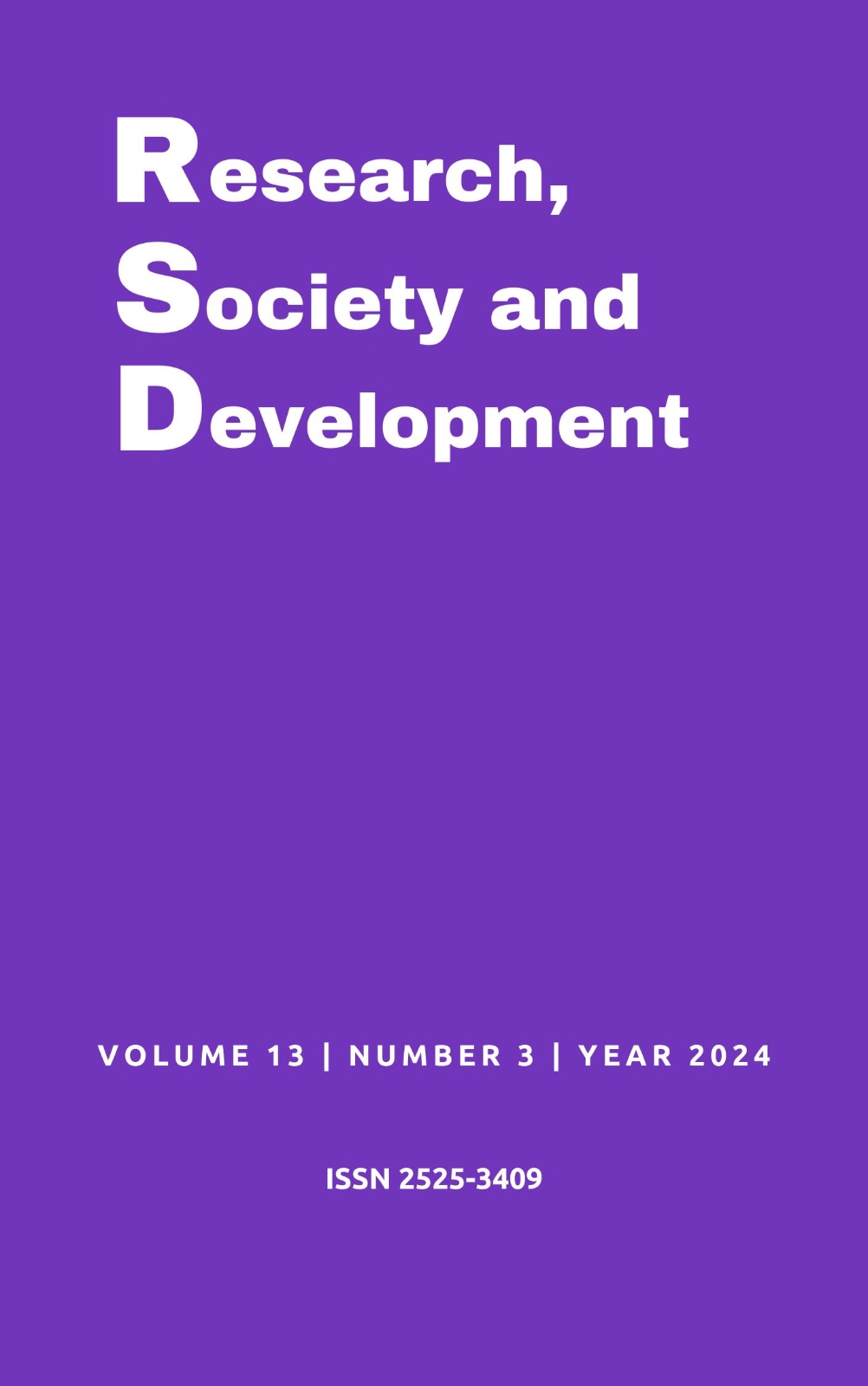Encountering the other in literature: The Borges face to face
DOI:
https://doi.org/10.33448/rsd-v13i3.45363Keywords:
Intertextuality, Anthropophagy, Fictionalization, Jorge Luis Borges.Abstract
In Comparative Literature, the relationships between authors and works do not start from the original-copy dichotomy, because just as the role of the author and the artistic work itself has been modified over time, the way in which writing and reading are correlated has undergone a reevaluation. In this way, textual creation is understood as dependent on transit in foreign libraries, which allows textual elements to be appropriated and given new meanings within the new context of production. Thus, the present work, carried out using the qualitative bibliographic methodology of Comparative Literature, aims to discuss the appropriation of the authorial image of Jorge Luís Borges by the author Antônio Fernando Borges in the short story Com toda certeza, quem sabe. Studies by Namorato (2011), Bakhtin (2022), Jobim (2020), among others, were used as theoretical support. The result was the understanding that through inclusion in someone else's library, an author-reader can be classified as a literary anthropophagist, since he carries out processes of swallowing the artistic food of his predecessor to construct his writing, which is distinct and, at the same time, time, close to the other for aesthetic and authorial reasons. In view of this, it was concluded that by resuming Borgean writing techniques, as is the case of (self) fictionalization, Antônio Fernando Borges inserts himself in literature as an author-reader than Jorge Luis Borges and also as a propagator of the echoing literary voice by the argentine author.
References
Alós, A. P. (2006) Texto literário, texto cultural, intertextualidade. Revista Virtual de Estudos da Linguagem – ReVEL. 4(6), 01-25. https://www.revel.inf.br/files/artigos/revel_6_texto_literario.pdf.
Andrade, O. (2021). Manifesto antropofágico. In: Gonçalves, J.F. (Org.) Manifestos Modernistas: Semana de Arte Moderna: 100 anos. Editora Serra Azul LTDA.
Bakhtin, M. (2022). Problemas da obra de Dostoiévski (Versão de 1929). Tradução, notas e glossário de Sheila Grillo e Ekaterina Vólkova Américo. Ensaio introdutório e posfácio de Shiela Grillo. São Paulo: Editora 34.
Bastos, H. (2011). O “som não”: literatura e mimese numa canção de cardoso. IN: Bastos, H; Araújo, A. de F. B (Orgs.) Teoria e prática da crítica literária dialética. Brasília: Editora UnB.
Bitarães Netto, A. (2004). Antropofagia oswaldiana: um receituário estético e científico. Annablume.
Borges, A. F. (1996). Que fim levou Brodie? Record.
Borges, J. L. Obras Completas (1923-1972). Emecé, 1974.
Brescia, P. (2008). Borges deviene objeto: algunos ecos. Variaciones Borges, Pittisburgh, (26), 125-144. https://www.borges.pitt.edu/sites/default/files/Brescia.pdf.
Burnet, J. (1994). O Despertar da Filosofia Grega. Trad. Mauro Gama. Siciliano.
Carvalhal, T. F. (2010). Literatura Comparada. Ática.
Chartier, R. (1998). A aventura do livro: conversações com Jean Lebrun / Roger Chartier. Tradução Reginaldo Carmelo Côrrea de Moraes. São Paulo: Editora UNESP.
Compagnon, A. (2008) O trabalho da citação / Antoine Compagnon; tradução de Cleonice P. B. Mourão. Editora UFMG.
Foucault, M. (2009). O que é um autor? In: ____. Ditos e Escritos: Estética – literatura e pintura, música e cinema (vol. III). Rio de Janeiro: Forense Universitária.
Jobim, J. L. (2020) Literatura comparada e literatura brasileira: circulações e representações. Makunaima; Editora da Universidade Federal de Roraima.
Kristeva, J. (2005) Introdução à semanálise. Tradução Lúcia Helena França Ferraz. (2a ed.), Perspectiva.
Meyer, A. (1958). O delírio de Brás Cubas. In:___ Machado de Assis (1935-1958). Livr. São José.
Miceli, S. Jorge Luis Borges: História social de um escritor nato. Novos Estudos, ano 77, 01, 150-167. https://novosestudos.com.br/produto/edicao-77/#gsc.tab=0.
Milreu, I. (2014). De autor a personagem: Jorge Luis Borges na mira de romancistas latino-americanos. 2014. 240f. (Doutorado em Letras – Área de Literatura e Vida Social). Faculdade de Ciências e Letras, Universidade Estadual Paulista, Assis.
Namorato, L. (2011). Diálogos borgeanos: intertextualidade e imaginário nacional na obra de Jorge Luís Borges e de Antônio Fernando Borges. 7Letras.
Nascimento, E. (2011). A antropofagia em questão. In: Rocha, J. C. de C.; Ruffinelli, J. (Orgs.). Antropofagia hoje? Oswald de Andrade em cena. Realizações Editora.
Nitrini, S. (2010). Literatura Comparada. EDUSP.
Downloads
Published
Issue
Section
License
Copyright (c) 2024 Rosangela Costa de Abreu; Tatiana da Silva Capaverde

This work is licensed under a Creative Commons Attribution 4.0 International License.
Authors who publish with this journal agree to the following terms:
1) Authors retain copyright and grant the journal right of first publication with the work simultaneously licensed under a Creative Commons Attribution License that allows others to share the work with an acknowledgement of the work's authorship and initial publication in this journal.
2) Authors are able to enter into separate, additional contractual arrangements for the non-exclusive distribution of the journal's published version of the work (e.g., post it to an institutional repository or publish it in a book), with an acknowledgement of its initial publication in this journal.
3) Authors are permitted and encouraged to post their work online (e.g., in institutional repositories or on their website) prior to and during the submission process, as it can lead to productive exchanges, as well as earlier and greater citation of published work.


